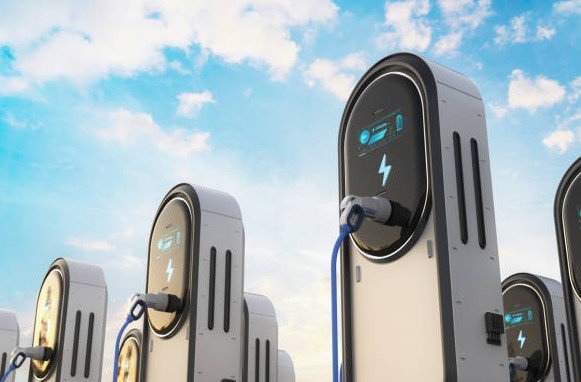Orange EV, a leader in electric yard trucks, has teamed up with OptiGrid to launch the Orange Juicer, a battery-integrated DC fast charger. This new device, revealed at the IANA Intermodal Expo in Long Beach, California on September 15, 2025, aims to speed up fleet electrification by cutting down on costly power upgrades and long wait times.
What Makes the Orange Juicer Stand Out
The Orange Juicer uses a built-in 180-kWh battery to pull energy from existing on-site power sources. It then delivers high-speed charging to electric vehicles without needing major grid changes.
This setup allows fleets to get full charging power while using up to 85 percent less input from the grid. Experts say this could change how companies switch to electric trucks, especially in busy depots where power limits slow things down.

Fleets often wait months or years for utility upgrades, but this charger promises to shrink that to weeks. It fits right into current operations, making it a practical choice for businesses ready to go green.
Revival of FreeWire Technology
Orange EV picked up ideas from FreeWire, a startup that closed last year but had smart charging tech. FreeWire’s concept used batteries to enable fast charging without big infrastructure costs.
By reviving this approach, Orange EV gives it a fresh twist with the Orange Juicer name. The device can handle up to 200 kW of DC fast charging, even on standard 110 or 220 AC connections.
This move shows how companies are building on past innovations to solve today’s EV challenges. It targets spots like truck yards where quick, reliable charging matters most.
Industry watchers note that FreeWire’s tech was great for low-traffic areas, but Orange EV adapts it for heavy-duty fleet use.
Key Benefits for Fleet Operators
The Orange Juicer tackles major hurdles in EV adoption. It cuts high infrastructure costs that can reach six or seven figures.
Fleets get scalable charging that grows with their needs. This means faster rollout of electric vehicles without breaking the bank.
Here are some top advantages:
- Reduces grid demand by storing and releasing power on demand.
- Speeds up installation, avoiding long utility delays.
- Lowers overall energy costs through efficient battery use.
- Supports multiple vehicle types in commercial settings.
These features make it easier for companies like logistics firms to electrify without major disruptions.
Technical Specs and Performance
Understanding the Orange Juicer’s specs helps show its real-world value. It stands about eight feet tall and integrates seamlessly into depot setups.
| Feature | Details |
|---|---|
| Battery Capacity | 180 kWh |
| Charging Speed | Up to 200 kW DC |
| Grid Input Reduction | Up to 85% less power needed |
| Availability | Q4 2025 |
| Primary Use | Fleet electrification, yard trucks |
This table highlights how the charger balances power and efficiency. Tests show it can charge vehicles quickly, boosting uptime for operations.
Users report improved reliability compared to traditional setups. The battery acts as a buffer, ensuring steady performance even during peak hours.
Impact on the EV Market
This launch comes as EV adoption grows in commercial sectors. Recent data from 2025 shows electric truck sales up 20 percent year-over-year, driven by lower costs and regulations.
Orange EV already leads in electric yard trucks, with clients like DHL proving the tech’s worth. The Orange Juicer builds on that success by addressing charging bottlenecks.
Experts predict more innovations like this as grids struggle to keep up with demand. It could inspire similar products, pushing the industry toward faster, greener solutions.
In related news, advances in wireless charging hit records this year, with demos reaching 270 kW. These trends tie into the Orange Juicer’s goal of making EV tech more accessible.
Looking Ahead for Fleet Electrification
The Orange Juicer positions Orange EV as a key player in sustainable transport. It solves practical problems, helping businesses meet emission goals.
As more fleets electrify, tools like this will play a big role. Commercial availability starts in the fourth quarter of 2025, giving companies time to plan.
This development reflects broader shifts toward efficient energy use in logistics. It promises a smoother path to zero-emission operations.
What do you think about this new charger? Share your thoughts in the comments and spread the word to help others learn about EV advancements.








